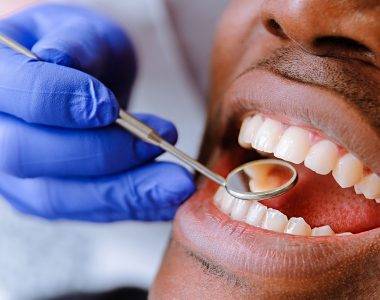
Arthritis is a prevalent and complex medical condition that affects millions of people worldwide. It is not a single disease but rather an umbrella term that encompasses over 100 different types of arthritis and related conditions. This article provides a comprehensive overview of arthritis, covering its various types, causes, symptoms, diagnosis, and treatment options, helping individuals gain a deeper understanding of this challenging condition.
Section 1: Introduction to Arthritis
Arthritis is a term derived from the Greek words “arthron,” meaning joint, and “itis,” indicating inflammation. As such, arthritis refers to the inflammation of one or more joints in the body. It is a leading cause of disability globally and can affect individuals of all ages, backgrounds, and lifestyles. Understanding the basics of arthritis is essential for those living with the condition or caring for someone who is.
1.1 Types of Arthritis
Arthritis is a multifaceted condition with numerous subtypes. Some of the most common types include:
1. Osteoarthritis (OA): The most prevalent type, OA is often referred to as “wear-and-tear arthritis” and primarily affects the joints’ cartilage, causing pain and stiffness.
2. Rheumatoid Arthritis (RA): An autoimmune disease that targets the synovium, a lining of the membranes surrounding the joints, leading to inflammation and pain.
3. Psoriatic Arthritis (PsA): PsA is linked to the skin condition psoriasis and can affect joints and cause skin changes, along with pain and inflammation.
4. Ankylosing Spondylitis (AS): A type of arthritis that primarily affects the spine, causing pain and stiffness.
5. Gout: Gout is characterized by the buildup of uric acid crystals in the joints, leading to intense pain and swelling, often in the big toe.
6. Juvenile Idiopathic Arthritis (JIA): Arthritis that occurs in children under the age of 16, with various subtypes, each affecting different joints.
7. Systemic Lupus Erythematosus (SLE): While SLE is primarily a systemic autoimmune disease, it often causes arthritis-like symptoms, with joint pain and inflammation.
8. Sjögren’s Syndrome: This autoimmune disorder affects the body’s moisture-producing glands and can lead to joint pain and inflammation.
9. Osteoporosis: While primarily known for causing bone fragility, osteoporosis can result in joint pain and limitations.
10. Septic Arthritis: Caused by an infection within a joint, septic arthritis can lead to severe pain and joint damage if not promptly treated.
11. Reactive Arthritis: Typically follows an infection in the body and can lead to joint inflammation, especially in the knees, ankles, and feet.
12. Fibromyalgia: Although not a classic arthritis, fibromyalgia can lead to widespread pain and tender points that mimic arthritis symptoms.
Understanding the specific type of arthritis is crucial for proper diagnosis and effective management.
1.2 Prevalence of Arthritis
Arthritis is a global health concern, and its prevalence is on the rise. As of the latest available data, over 54 million adults in the United States have been diagnosed with some form of arthritis, making it one of the most common chronic health conditions. Worldwide, it is estimated that 350 million people suffer from arthritis, and this number is expected to increase in the coming decades due to aging populations and lifestyle factors.
1.3 The Impact of Arthritis
Arthritis can have a profound impact on an individual’s quality of life. It is a leading cause of work-related disability, making it challenging for many to maintain employment. Additionally, arthritis can lead to limitations in daily activities, including difficulty with walking, climbing stairs, and even simple tasks like dressing and grooming.
The condition often has an emotional toll, as chronic pain and disability can lead to depression, anxiety, and reduced overall well-being. Understanding the far-reaching consequences of arthritis is crucial for those affected and for healthcare providers who aim to offer comprehensive care and support.
Section 2: Causes and Risk Factors
The causes of arthritis vary depending on the type of arthritis. Some forms are primarily due to wear and tear on the joints, while others are linked to autoimmune processes, infections, or genetic factors.
2.1 Osteoarthritis (OA)
OA, the most common form of arthritis, is primarily caused by the gradual breakdown of joint cartilage over time. This can be the result of several factors:
- Ageing: The risk of developing OA increases with age, as the cartilage naturally wears down over time.
- Genetics: Some individuals may have a genetic predisposition to OA.
- Joint Injuries: Previous joint injuries or overuse can lead to OA, especially in the injured joint.
- Obesity: Excess body weight places added stress on weight-bearing joints like the knees and hips, increasing the risk of OA.
- Occupational Hazards: Certain occupations that involve repetitive joint movements or heavy lifting may increase the risk of OA.
2.2 Rheumatoid Arthritis (RA)
RA is an autoimmune disease, which means that the body’s immune system mistakenly attacks its own tissues. The exact cause of RA is still not fully understood, but several factors may contribute:
- Genetics: Individuals with a family history of RA may be at a higher risk.
- Environmental Triggers: Infections or exposure to certain environmental factors may trigger RA in genetically susceptible individuals.
- Hormones: Hormonal changes in women, such as during pregnancy or menopause, can influence RA.
- Smoking: Cigarette smoking is a known risk factor for RA, particularly in susceptible individuals.
2.3 Other Types of Arthritis
Other types of arthritis, such as psoriatic arthritis, gout, and ankylosing spondylitis, have distinct causes and risk factors. For example:
- Psoriatic Arthritis (PsA): PsA is linked to psoriasis, a skin condition, and often occurs in individuals with a family history of psoriasis.
- Gout: Gout is caused by the accumulation of uric acid crystals in the joints and is often associated with dietary factors and family history.
- Ankylosing Spondylitis (AS): AS is more common in individuals with a specific genetic marker (HLA-B27) and often begins in early adulthood.
Understanding the underlying causes and risk factors for each type of arthritis is critical for early diagnosis and management.
Section 3: Symptoms and Diagnosis
Recognizing arthritis symptoms is the first step in seeking appropriate medical care. The signs and symptoms of arthritis can vary widely depending on the type and severity of the condition.
3.1 Common Symptoms
While the symptoms of arthritis can be diverse, there are some common manifestations that individuals may experience:
- Joint Pain: Pain is a hallmark symptom of arthritis. It can be mild, moderate, or severe and may be constant or intermittent.
- Joint Swelling: Inflamed joints often appear swollen and feel warm to the touch.
- Stiffness: Joint stiffness, particularly in the morning, is a common symptom. It can make movement difficult and improve with activity.
- Reduced Range of Motion: Arthritis can lead to decreased flexibility and limited joint motion.
- Fatigue: Chronic pain and inflammation can cause extreme fatigue.
- Weakness: Weakened muscles around affected joints may lead to reduced strength.
- Skin Changes: Certain types of arthritis, such as psoriatic arthritis, can result in skin changes like redness and scaling.
- Fever and General Malaise: Some forms of arthritis, like rheumatoid arthritis, can lead to systemic symptoms like fever and a general feeling of illness.
3.2 Diagnosis
Diagnosing arthritis typically involves a combination of clinical evaluation, medical history, imaging tests, and laboratory tests. The diagnostic process may include:
- Medical History: A thorough review of an individual’s medical history and family history can provide critical clues.
- Physical Examination: A healthcare provider may examine the affected joints, looking for signs of inflammation, swelling, and deformity.
- Imaging: X-rays, MRIs, and ultrasound may be used to visualize joint damage and assess disease progression.
- Laboratory Tests: Blood tests can help identify specific antibodies or markers associated with autoimmune forms of arthritis, such as rheumatoid arthritis.
Early diagnosis is essential for initiating appropriate treatment and preventing further joint damage.
Section 4: Arthritis Treatment
The treatment of arthritis varies depending on the type, severity, and individual factors. It typically involves a combination of medication, lifestyle changes, physical therapy, and, in some cases, surgery.
4.1 Medications
Medications are commonly used to manage arthritis symptoms and slow disease progression. Some common medications include:
- Pain Relievers: Over-the-counter pain relievers like acetaminophen or nonsteroidal anti-inflammatory drugs (NSAIDs) can help alleviate pain and inflammation.
- Disease-Modifying Antirheumatic Drugs (DMARDs): DMARDs are used to treat autoimmune forms of arthritis like rheumatoid arthritis. They work by suppressing the immune system to reduce inflammation.
- Biologics: Biologics are a type of DMARD that specifically targets proteins involved in the inflammatory process. They are often used when other treatments are ineffective.
- Corticosteroids: Corticosteroids can be injected directly into the affected joint to provide rapid relief from pain and inflammation.
- Analgesics: Analgesic medications like opioids may be prescribed for severe pain in some cases.
4.2 Lifestyle Changes
Lifestyle modifications are crucial for managing arthritis and improving overall well-being. These changes can include:
- Exercise: Regular physical activity can help maintain joint flexibility and strengthen the muscles around the affected joints. Low-impact exercises like swimming, cycling, and tai chi are often recommended.
- Diet: A healthy, balanced diet can help with weight management and reduce the strain on weight-bearing joints. Certain foods, like those rich in omega-3 fatty acids, may have anti-inflammatory properties.
- Weight Management: Maintaining a healthy weight is vital for reducing stress on joints, particularly in individuals with osteoarthritis.
- Assistive Devices: Devices like braces, canes, or splints can provide support and reduce joint strain.
4.3 Physical Therapy
Physical therapy is an essential component of arthritis treatment. It can help individuals learn exercises and techniques to improve joint function and reduce pain. A physical therapist can create a customized exercise plan to address an individual’s specific needs.
4.4 Surgery
In some cases, surgery may be necessary to repair severely damaged joints. Common surgical procedures for arthritis include:
- Joint Replacement: Total joint replacement surgery, such as hip or knee replacement, can significantly improve joint function and reduce pain.
- Joint Fusion: In cases where joint replacement is not an option, joint fusion may be performed to stabilize the joint and alleviate pain.
- Synovectomy: This procedure removes the inflamed synovium lining the joint to reduce pain and inflammation.
Section 5: Coping and Support
Living with arthritis can be challenging, both physically and emotionally. Coping strategies and a strong support system are vital for improving one’s quality of life.
5.1 Coping Strategies
- Self-Care: Prioritizing self-care, including rest, stress management, and adhering to treatment plans, is crucial.
- Pain Management: Learning pain management techniques, such as deep breathing and meditation, can help individuals cope with pain.
- Support Groups: Joining support groups or seeking therapy can provide emotional support and valuable coping strategies.
- Adaptive Devices: Using assistive devices can help individuals maintain independence and reduce strain on joints.
- Education: Learning about one’s specific type of arthritis and treatment options can empower individuals to take control of their condition.
5.2 Support Systems
- Family and Friends: Loved ones can provide emotional support and assistance with daily tasks.
- Healthcare Team: Building a strong relationship with healthcare providers is crucial for effective arthritis management.
- Support Groups: Participating in support groups or connecting with others facing similar challenges can reduce feelings of isolation.
Section 6: Future Research and Developments
Arthritis research is ongoing, with a focus on identifying new treatments, improving diagnostics, and understanding the underlying causes of the condition. Promising areas of research include:
- Biologics: Continued research into biologic medications that target specific inflammatory pathways may lead to more effective treatments with fewer side effects.
- Stem Cell Therapy: Stem cell therapy shows potential for regenerating damaged joint tissues.
- Precision Medicine: Tailoring treatment plans to an individual’s specific genetic and molecular profile may improve outcomes.
- Pain Management: Research into novel pain management techniques and therapies can help individuals better cope with arthritis-related pain.
Section 7: Conclusion
Arthritis is a complex and diverse group of conditions that impact individuals physically, emotionally, and socially. Understanding the causes, symptoms, diagnosis, and treatment options for various types of arthritis is crucial for those affected by this condition.
As ongoing research leads to advancements in arthritis management and new therapies, there is hope for improved outcomes and a higher quality of life for individuals living with arthritis. By staying informed and taking proactive steps, individuals can better manage their arthritis and work toward a future with less pain and greater mobility.
Arthritis is a challenging condition, but with the right knowledge, support, and treatment, individuals can lead fulfilling lives and effectively manage their symptoms.



